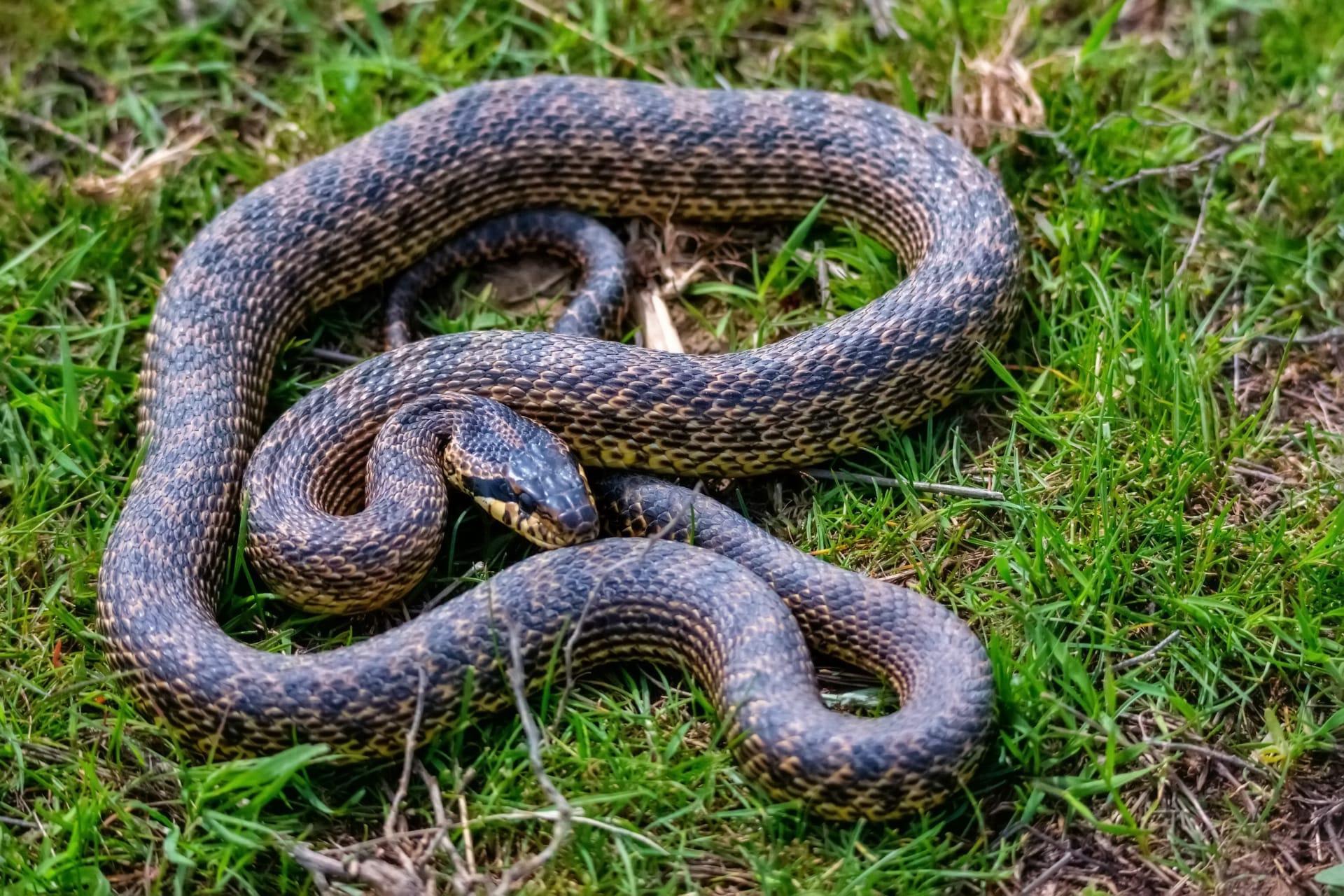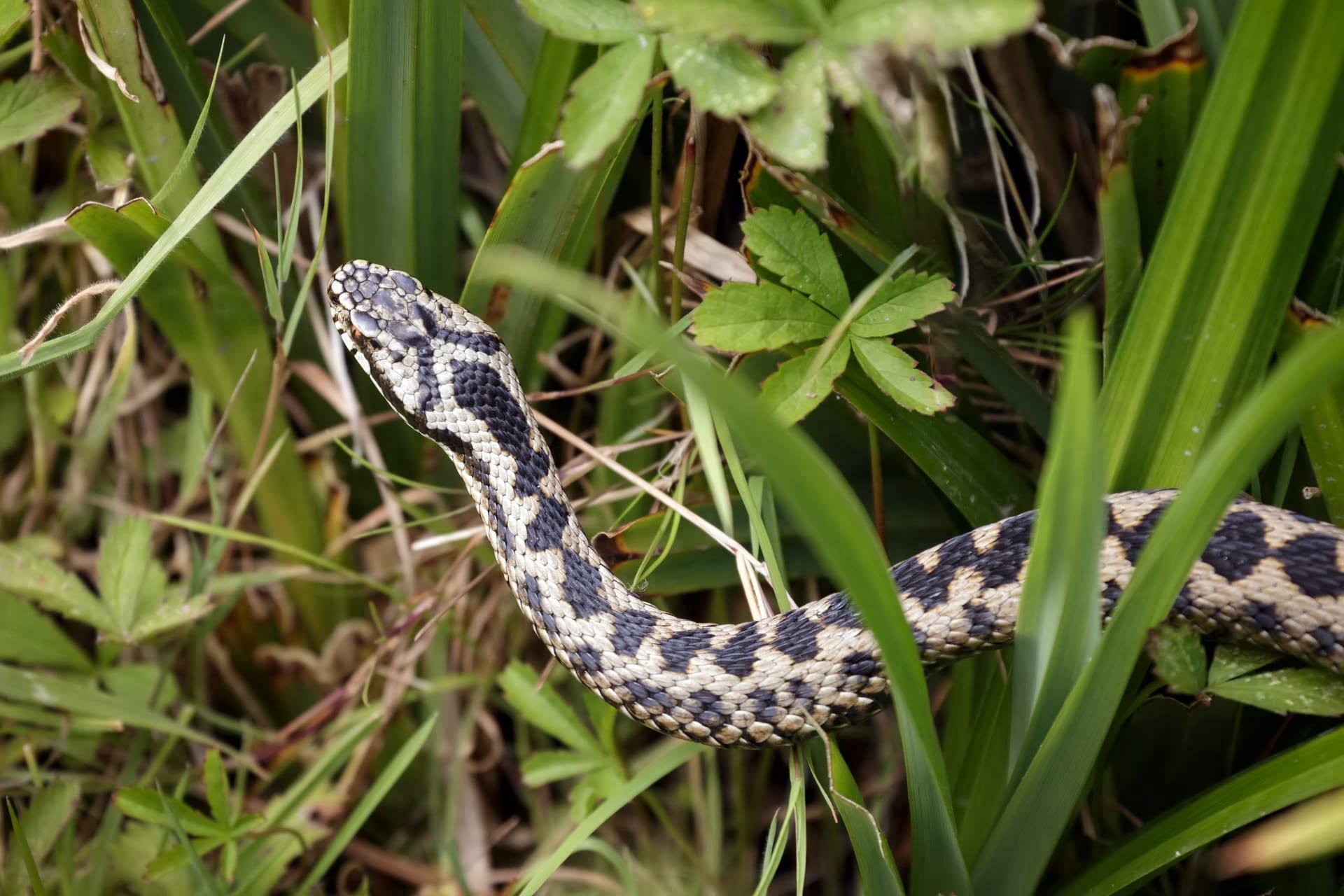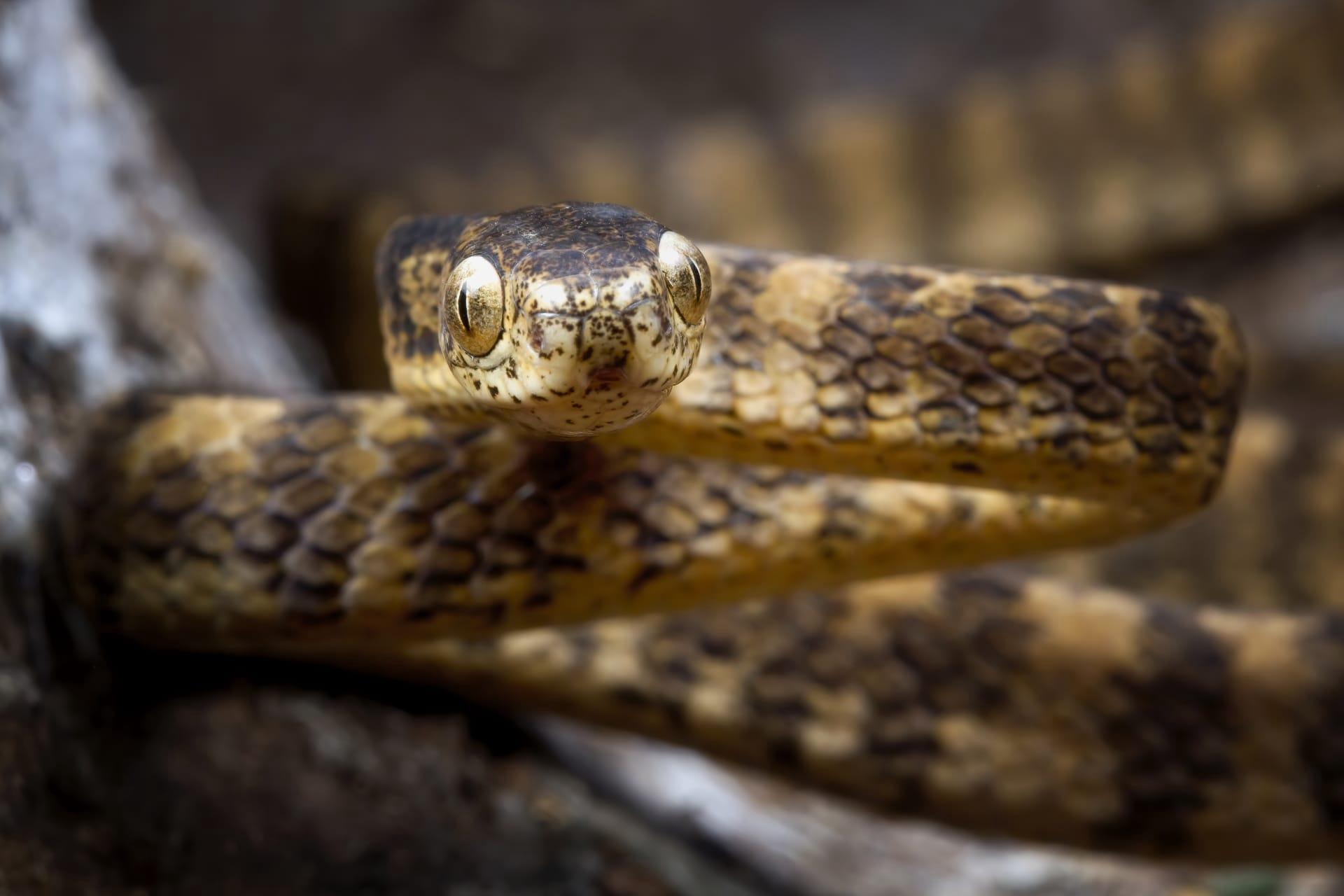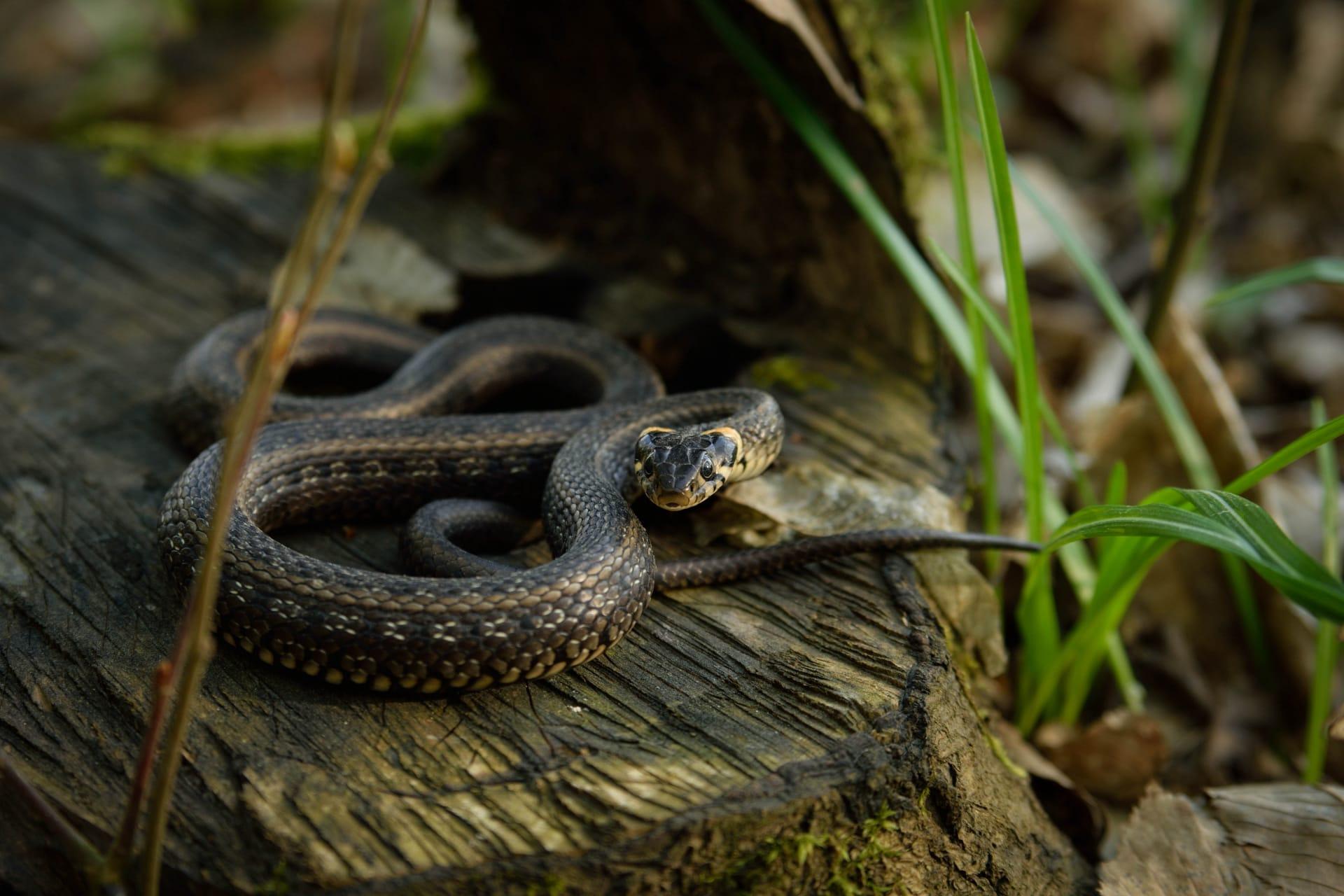1
Grass snakes, known scientifically as Natrix natrix, display a fascinating behavior for self-defense: they play dead. When threatened, they will flip onto their backs, open their mouths, loll out their tongues, and emit a foul-smelling fluid from their anal glands. This convincing act often deters predators, who prefer live prey. This performance, however, isn't always perfect. Sometimes, if the snake is prodded, it will flip back over, forgetting that it's supposed to be "dead."
Another intriguing aspect of grass snakes is their swimming prowess. These snakes are excellent swimmers and can be often found near water bodies. Their affinity for water is unique among European snakes. They have a distinctive technique, using their flexible bodies to move in an S-shaped pattern, allowing them to glide smoothly through water. This skill is not just for hunting amphibians and fish, but also serves as an escape mechanism from predators.

2
Grass snakes have a remarkable diet specialization. Unlike many other snake species that have a varied diet, grass snakes primarily feed on amphibians, especially frogs and toads. Their hunting strategy is impressive; they can catch their prey both on land and in water. Their diet changes with the availability of amphibians throughout the year, sometimes resorting to fish or small mammals when amphibians are scarce.
Interestingly, grass snakes are oviparous, meaning they lay eggs, which is quite rare among British snakes. They lay 10 to 40 eggs in rotting vegetation, like compost heaps, where the heat generated from decomposition aids in incubation. These eggs hatch after about 40 days, depending on the temperature. The hatchlings are about 7 inches (18 cm) long and are independent from birth, fully capable of hunting and fending for themselves.

3
Grass snakes, in their juvenile stages, have a distinctive appearance that differentiates them from their adult counterparts. Young grass snakes often have a more pronounced and vivid color pattern, with a striking yellow collar around their neck, which fades as they mature. This bright collar is thought to be a form of warning coloration, deterring predators by indicating that they may be toxic or unpalatable, a trait seen in various other wildlife species.
These snakes exhibit a fascinating thermoregulation behavior. Being ectothermic (cold-blooded), they rely on external sources of heat to regulate their body temperature. They bask in the sun to warm up and are often found on rocks, logs, or open areas. However, they are also known to use man-made structures like garden compost heaps, which not only provide warmth but also attract their prey, making these spots ideal for both feeding and thermoregulation.

4
Grass snakes have a wide geographic range, spanning across Europe and extending into parts of North Africa and Asia. This wide distribution demonstrates their adaptability to various habitats, including forests, meadows, and wetlands. They are particularly abundant in areas with a mix of water bodies and vegetation, which provide ample food sources and hiding spots from predators.
An interesting aspect of grass snake behavior is their hibernation pattern. They hibernate during the colder months, typically from October to April in the northern parts of their range. They seek out frost-free shelters like burrows or piles of rubble to survive the cold. During hibernation, their metabolic rate drops significantly, allowing them to survive for months without food, a remarkable adaptation to seasonal changes in their environment.

5
Grass snakes are known for their non-venomous nature, making them harmless to humans. Unlike some other snake species, they do not possess venom or fangs. Instead, their defense mechanism is primarily their ability to play dead, as mentioned earlier. This trait makes them less of a threat to humans and contributes to their popularity in regions where they are common.
Lastly, grass snakes play a crucial role in their ecosystems. As predators, they help control amphibian populations, maintaining a balance in the local food chain. Additionally, their presence indicates a healthy, biodiverse environment, as they require clean water and abundant prey to thrive. Thus, they serve as important bioindicators, signaling the overall health of the ecosystems they inhabit.